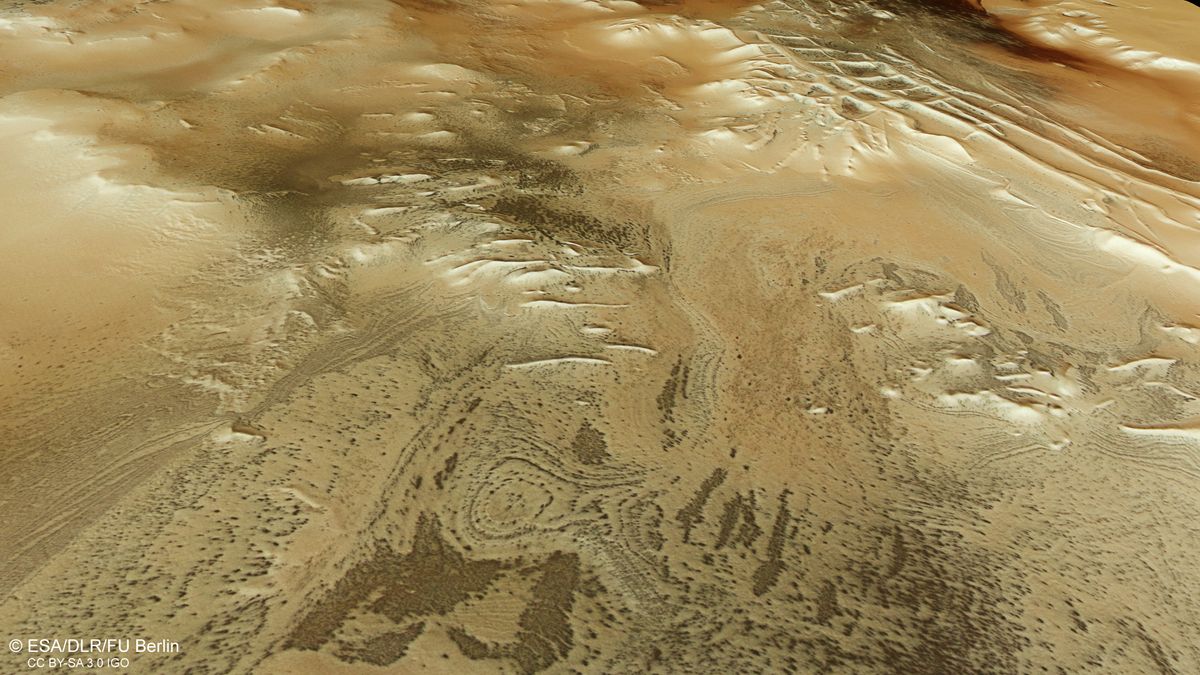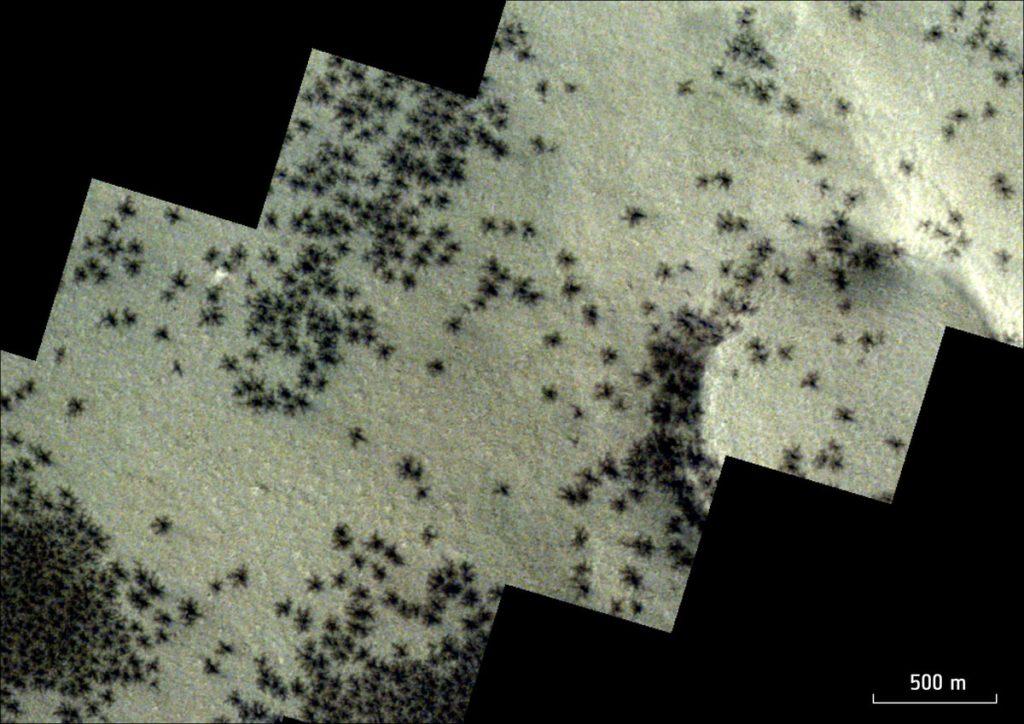New Satellite Images Reveal Hundreds Of Dark “Spiders” On Mars’ Inka City: Are They Real?
2nd May 2024
Images taken by the European Space Agency’s Mars Express satellite and the ExoMars Trace Gas Orbiter have shown dense groups of tiny dots in Mars‘s geological feature called Inca City. The dots resemble miniature “Mars spiders” that gathered closely together.
However, scientists hastened to calm arachnophobes’ fears (and maybe disappoint David Bowie fans): these dots are actually just a seasonal eruption of carbon dioxide gas on Mars.
Why Do The “Mars Spiders” Appear?
New European Space Agency (ESA) photographs captured a phenomenon that occurs every spring. The mysterious black “spiders” on the Red Planet appear as carbon dioxide ice releases dusty gas geysers.

The “Mars spiders” are pathways of gas that range from 0.03 to 0.6 miles wide (around 45 meters to 1 kilometre). They form when the southern part of Mars gets warmer during springtime. This warmth melts layers of carbon dioxide ice. When this happens, the ice turns directly into gas in a process called sublimation.
When the gas expands and moves upward, it bursts through the layers of ice above, picking up dark dust from the solid ground. This dust shoots out of the ice and then falls back down, covering the surface. This creates the cracked, spider-like design we can see. In certain areas, these bursts of gas can break through ice layers up to 3.3 feet thick, as reported by ESA.
What Is Inka City, Where the “Mars Spiders” Were Seen?
Inca City is also known as Angustus Labyrinthus. It got its name from its long, ruin-like ridges that were initially believed to be fossilized sand dunes or remnants of ancient glaciers on Mars. These glaciers might have left tall walls of sediment as they withdrew.
How Did Inka City Get Its Name?
However, in 2002, the Mars Orbiter uncovered that Inca City is part of a circular feature about 53 miles (86 km) wide. This feature could be an old impact crater, suggesting that the straight ridges might be magma intrusions. They pushed up through Mars’ cracked, heated crust after being struck by a rogue asteroid. Over time, the crater would have filled with sediment, which has gradually eroded away, partially exposing the magma formations that resemble ancient ruins.






Thank you for your comment! It will be visible on the site after moderation.